Simple Steps to an Early Tax Refund
The sooner you get your money back from the IRS, the better, so start now. If you want to get your 2011 taxes in early and get your refund quickly, here are seven strategies to getting those dollars in your pockets ASAP. Here’s what you have to do.
1. Get Started
The first step is the hardest. Stop thinking about it and get moving. Until you actually start your return, you’ll never finish it. And that’s probably going to slow down your refund.
If you don’t have all your numbers, just put your name and address on the form. It will get you in the mindset to move forward.
Your first step is to break the inertia. As my father used to say, a trip of a thousand miles begins with a traffic jam. Break that jam and get moving.
2. Accumulate the Data
January is collection month. By the second week of February, you should have the numbers in hand. Make sure you’ve gotten W-2s and any statements from your brokers and banks. You’ll receive 1099 forms for any interest, dividends and stock sales.
Your mortgage company will send you a Form 1098 for any interest and real-estate taxes paid. Get those statements together and review the numbers. They’re not always right. They won’t include any interest you paid at the very end of December because the creditor won’t have received the money until 2012.
3. Put the Numbers in IRS Categories
The Internal Revenue Service is not going to add up those numbers for you. You’re going to want to have totals for the income and deduction categories the IRS provides. You’ll need those final numbers if you’re doing your own return, whether by hand or by computer. If you’re having your return prepared, you’ll want to give those numbers to your CPA to minimize the bill.
I suggest my clients use what I call the envelope system. You create an envelope for each of the IRS income/deduction categories. There’ll be an envelope for medical expenses, charitable contributions, job expenses, interest paid, etc. Find all the receipts, all the checks and all the invoices, then put each in the appropriate envelope.
In December 2010, Congress extended a number of tax breaks, including the sales-tax deduction, a $250 deduction for classroom expenses and deductions for mortgage insurance premiums and college tuition expenses. Congress will have to revisit them if they are to continue for 2012.
And don’t forget about other tax breaks, including credits for energy improvements in 2011, amended adoption credits and various credits for college education costs.
You can use this simple system all year: Throw all of your receipts into a file or even a shoe box. When you reconcile your checking account, on a monthly or at least a quarterly basis, break down the checks and receipts according to the categories you selected.
By the end of January, you should have all your checks and receipts broken down in each envelope by deduction category. Add up the receipts and checks (don’t double count), and those are the numbers you use on your return or give to your preparer.
That’s how much you’ve spent in each deduction category. And with this system you never have to fear an audit.
An audit is nothing more than the IRS asking you to prove the numbers you put on your return. You’ve already done that. Just hand over the deduction-category envelope with the receipts and checks. After a series of matches, it’s going to be a quick audit.
4. Analyze the Numbers
Sometimes, the raw numbers you have are going to be wrong.
On the income side, you’re required to report any and all interest and dividends received, even if you don’t receive a Form 1099.
You’ll have to match up the sales of stock with the cost of those shares. The number shown by your broker on Form 1099-B last year was only the sale price. You’re not taxed on 100% of that number. You reduce it, on Schedule D of your return, by your cost, including broker’s fees. You’re taxed only on the net profit. Starting with sales in 2011, your broker is required to report cost basis as well. Speak with your broker before any sales are made, and discuss alternative ways of valuing shares if your whole position isn’t liquidated. From a tax point of view, you want to sell the shares with the highest cost to minimize your current tax.
If you don’t sell 100% of your position, you’ll have to allocate your costs on a per-share basis.
On the deduction side, you may have deductions not reflected by the raw data.
Say you make your Jan. 1, 2012, mortgage payment on Dec. 31, 2011. The interest you pay won’t be reflected on the Form 1098 sent by your mortgage company. That’s because it won’t get the check or the online payment until 2012. (If you pay online, be sure your bank records the date that you send the payment properly. A canceled check is still adequate proof.)
Paying before the end of the year transforms your January 2012 payment into a 2011 deduction, and you should run an amortization schedule to compute the additional interest. That additional interest would be shown on line 11 of your Schedule A.
(You can make the same tax move at the end of 2012, converting what would normally be a January 2013 payment into a 2012 deduction.)
5. Call Your Accountant
If you’re going to have your return professionally prepared, call your accountant now for an appointment.
I know, you’re her favorite client. But if you want an appointment tomorrow, you better call her yesterday.
In any case, once you’ve made that appointment, you’ve made a commitment to get your return done. And that means you’ve committed to get ready yourself. Just make sure you’ve got the numbers in order when you show up. Your wallet will appreciate it.
6. Put Ink to Paper
At least open the tax program on your computer. You’ve got your numbers. If you’re doing your own return, put ink to paper. Go to your quiet place and actually do your return.
You’ve already done the real work. Now you’re just putting numbers in boxes. Relax; this is the easy part. Remember, we started with how to get your refund faster.
7. Mail Your Return
A completed return calling for a refund that just sits on your desk is the IRS’ idea of heaven. It’s your money. Don’t leave it with the IRS. It’s bad enough that they’ve held it all year without paying you any interest on your excess payment. Don’t compound the pain by delaying the mailing.
Of course, the best way to speed up your return is to e-file. More than 79% of all individual tax returns filed in 2011 were e-filed, according to the IRS. That was up from 70% in 2010. Last June, the IRS reached a milestone with 1 billion e-filed tax returns since the inception of the program.
The IRS appreciates the cost savings and claims it expedites your refund. The IRS is offering what it bills as a free e-filing service. It’s not quite free. You may still have to pay a “transmitter” to convert your return into IRS code and send it on.
In either case, electing a direct deposit of your refund will always get it into your hands faster than snail mail.
You can even split your direct deposit into three different accounts, like a checking, savings and retirement account.
Complete lines 73(b), (c) and (d) of your Form 1040, and, coupled with an e-filed return, in theory you could have your refund in your bank account in as little as 24 hours. In practice, it usually takes about 10 days.
The IRS now has a web tool for tracking refunds that can tell you whether the IRS received your return and whether your refund was processed and sent to you.
You can get more information on the refund tool here. The IRS also has a refund-assistance line: 1-800-829-1954.






